Last summer, visitors who managed to make it to Croatia had a taste of what the country was like before the days of mass tourism. And it tasted good. But while honeypots such as Dubrovnik were unrecognisably quiet, there have always been parts of the country where you don’t have to wade through crowds.
Places where things move at a less hurried pace, where Croatian life can be savoured, where you get a flavour of what the Dalmatians call fjaka – the art of doing nothing. These islands and mainland destinations are what you want in a post-lockdown escape: peace, beauty and the chance to discover why Croatia is such an enticing country.
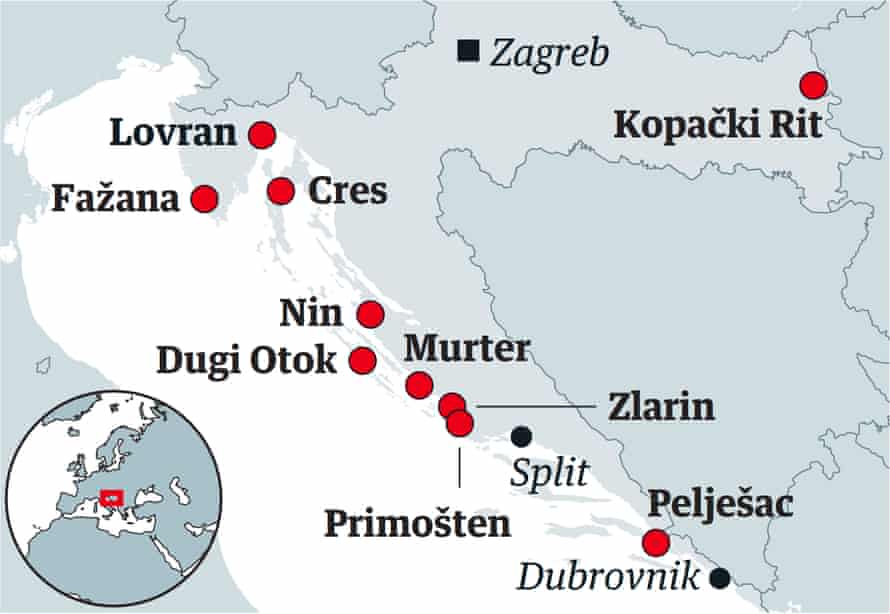
Zlarin
It’s hard to move at a fast pace on this island in the Šibenik archipelago – it has banned cars, so you’ll have to walk or cycle. As the island is only eight square kilometres, that’s not much of a trial. A half-hour ferry ride from the city of Šibenik takes you to the island’s only village. Not only is Zlarin covered in greenery, but it stepped up green credentials two years ago by becoming the first island in Croatia to ban single-use plastics.
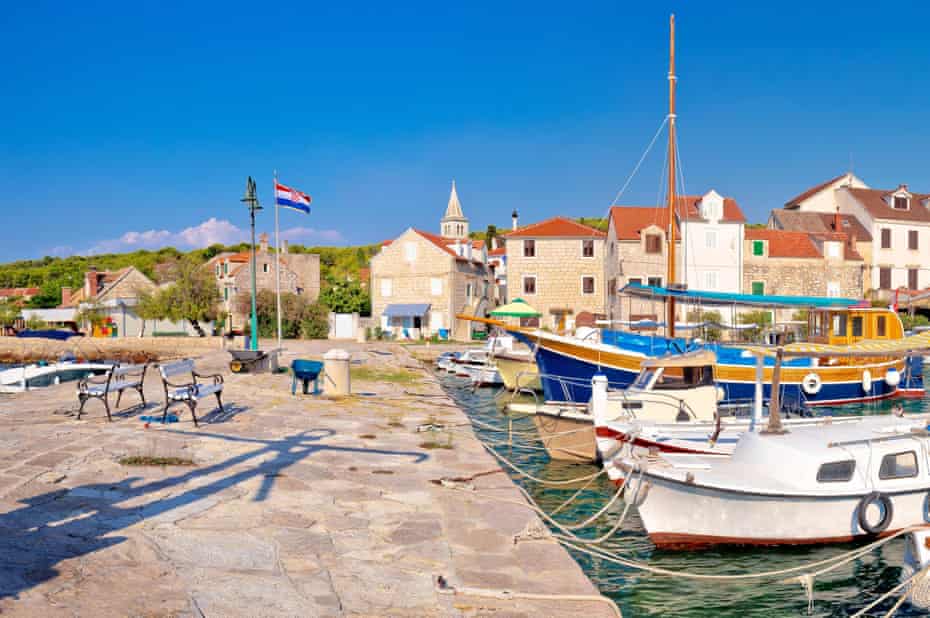
What to do
Zlarin was once known for its coral diving, which you can tell from its coral shops and a tiny coral museum that’s open in the summer. Smothered in cypress, olive, almond and fig trees, it is a place for hiking and kayaking to secluded beaches, perhaps trekking up to its highest point, Klepac, at 169 metres, and taking in views of Velebit mountain. From Zlarin it’s a 15-minute ferry ride to the even sleepier island of Prvić, whose beaches make an agreeable day trip. Pop into the entertaining museum devoted to Faust Vrančić, local Renaissance man, inventor and early parachute pioneer.
Where to stay
Stone Houses Zlarin (from €90) are two attractively renovated village houses with balconies, terraces and lots of exposed brick. House Nana has three bedrooms but can squeeze in 10 people, while House Vana has two bedrooms with capacity for eight. Just 200 metres from the harbour, Apartments Katina (from €35) has three simple apartments for two, and a fourth that sleeps four, all with terraces.
Where to eat
Konoba Aldura, right in front of the marina, serves generous platters of grilled fish and seafood and has sea views. Set back further in the village, Konoa Prslika has a stone terrace with olive trees to go with its Mediterranean menu, including grilled langoustines and octopus cooked over a wood fire.
Primošten
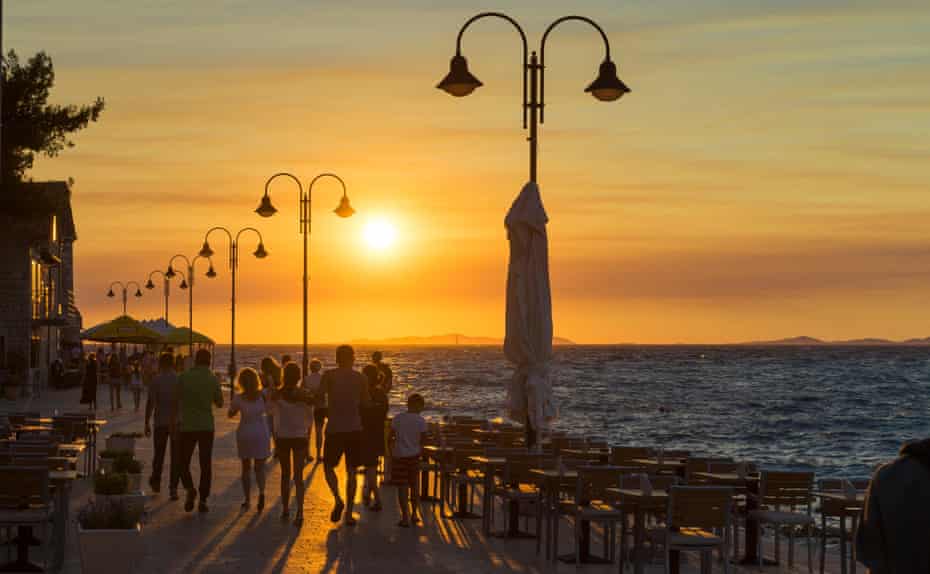
On the coast road between Split and Šibenik – but bypassed by an inland motorway – Primošten has one of Croatia’s most photogenic old towns, on its own small island. The jumble of medieval houses is connected to the mainland via a causeway, while a neighbouring promontory covered in pines is home to the area’s best beaches.
What to do
While you’re wandering through the stepped streets of the old town, head uphill to the 15th-century church of Sveti Juraj (St George) and take in the views. The little promontory that sticks out like a thumb is ringed by the pine-backed beaches of Raduča – the smaller of which has views of the old town. Endless vineyards cover much of the landscape – it is home to the indigenous and full-bodied babić grape. Call Prgin Winery and pop in for a tasting. In spite of Primošten’s laid-back feel, the municipality is home to one of Dalmatia’s biggest nightclubs, Aurora, just a few miles away from the old town.
Where to stay
Facing Mala Raduča beach, Zora Hotel (half-board doubles from €96) has airy rooms with balconies and sea views, an outdoor pool and sauna. Villa Koša (from €70) near the entrance to Primošten’s harbour has 14 apartments with kitchens, balconies and sea views.
Where to eat
In the old town is Agape Kitchen & Wine, which offers Dalmatian small plates as well as grilled spiny lobster (a local speciality) and the rich beef dish of pašticada with gnocchi. Grab a seat on the sea-facing terrace of Konoba Toni by the marina for big plates of grilled fish.
Fažana
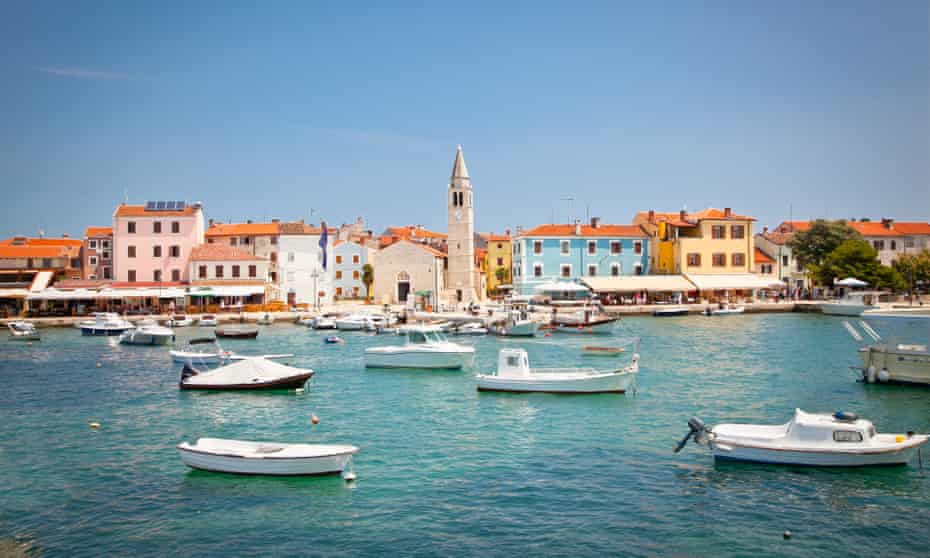
This small port on Istria’s southwestern coast isn’t exactly off the tourist radar – it’s the departure point for boat trips to the Brijuni Islands national park. But with Istria’s big-hitters Pula and Rovinj only 15 and 30 minutes away respectively, family-friendly Fažana tends to get overlooked. In this delightful fishing port you can get a more relaxed taste of Istria.
What to do
Fažana’s appeal is its mellow atmosphere and long, pebbly beaches. Its medieval centre is heralded by the 15th-century church of Saints Cosmas and Damian, and look out for the portico-fronted 14th-century Church of Our Lady of Mount Carmel. A boat trip to the Brijuni Islands (only 15 minutes) is a must. More than a dozen islands form the archipelago, but excursions go to Veli Brijun, the former summer playground of Tito – and, before him, the Habsburgs and the Romans.
Where to stay
Villa Mihaela (from €30) has five bright apartments with terraces in a large house in a residential area about a 10-minute walk from the beach. There’s also a pool, bike rental and a communal outdoor kitchen for barbecues. Set in a restored 16th-century townhouse in the centre of Fažana, Heritage Hotel Chersin (B&B from £105) has pretty rooms with exposed stone walls, and the garden restaurant is just as attractive.
Where to eat
At Konoba Batana by the harbour, soak up sea views from its covered terrace. The sharing fish and meat platters offer excellent value. Book ahead for a table at Konoba Beccaccia, a country restaurant a few miles out the town. The giant hearth is where much of the cooking is done: steaks of black angus beef, along with meat cooked slowly under hot embers in a bell-shaped pot called a peka. The owners also run an apartment complex on the site, with an outdoor pool.
Dugi Otok
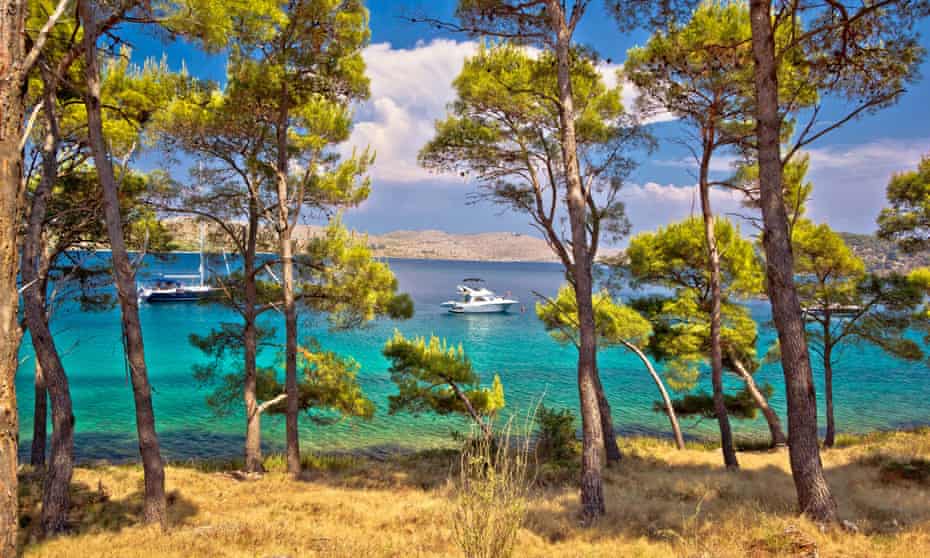
Dugi Otok means “long island” – it straggles along for 43km but is not much more than 4km wide. The most beautiful island of the Zadar archipelago (and about an 80-minute ferry ride from Zadar), Dugi Otok has an intoxicating wildness about it, with only a few tiny villages and a fragrant landscape of wild herbs, pines, fig trees and olive groves.
What to do
This is the place to kick back and enjoy two of the Adriatic’s loveliest sights. Telašćica nature park is an oddly shaped bay with six islets within and another 13 surrounding it – and a saltwater lake as well. Climb the cliffs for views of the Kornati national park to the south; and cycle, hike, swim, go scuba diving or just sail and kayak around the bay. Access is easiest by boat excursion from Dugi Otok’s largest settlement, Sali.
Further north is Sakarun (or Saharun) beach, a sheltered cove of white sand which often appears on lists of Croatia’s most beautiful beaches. Less well known is the pine-fringed Brbinjšćica Bay, from where you can explore the blue depths of the Dragon’s Eye and Golubinka sea caves.
Where to stay
Apartmani Vesna Giro (from €75) has two waterside apartments in Soline, both with two bedrooms, sea-facing terraces, a barbecue and mooring for boats. Hotel Maxim (half-board doubles from €138) is one of four hotels in the Hoteli Božava complex near the ferry port in Božava. Stylish rooms with balconies overlook the sea, as does the outdoor pool.
Where to eat
Enjoy views of Veli Rat’s marina from the terrace of Konoba Lanterna, where grilled calamari, octopus and lobster are among the specialities. Konoba Trapula on Sali seafront offers Adriatic favourites such as cuttlefish-ink risotto and octopus salad, along with grilled sea bass and steaks.
Murter
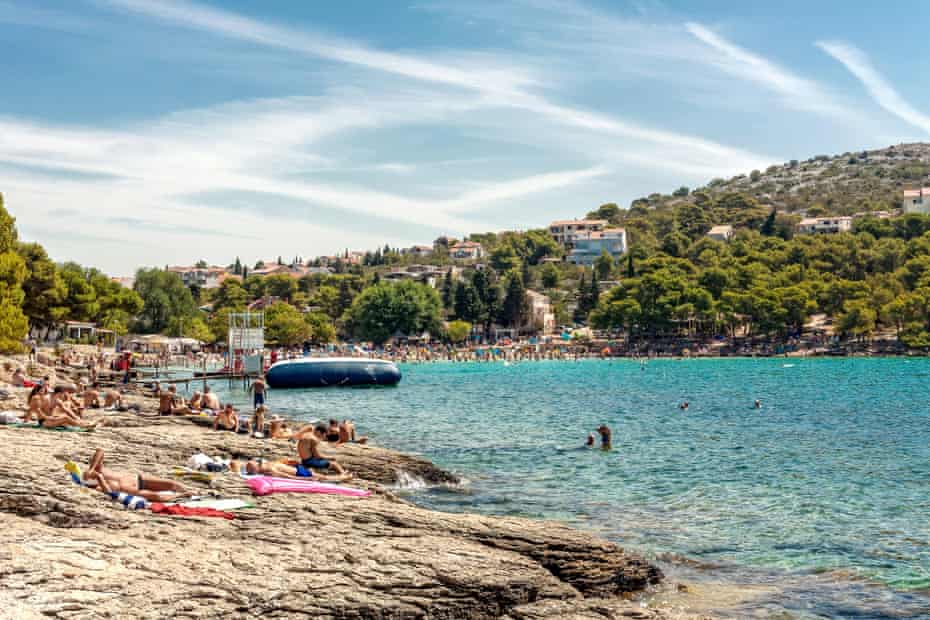
The largest island in the Šibenik archipelago is the easiest to reach, thanks to the little lift bridge at Tisno, a small village that straddles Murter and the mainland. While Tisno was put on the map thanks to the dance festivals that take place in July and August (and which are scheduled to restart this year), Murter has always been more of a low-key place.
What to do
Murter town is an excellent base for boat trips to the Kornati national park, an archipelago of 89 islands, all off-grid and with an otherworldly, barren beauty. Otherwise, hit the beaches, almost of all of which are rugged and rustic. Slanica is the busiest, but head further along the island’s west coast for rocky and pebbly bays ringed with pine and olive trees, such as Kosirina and Čigrada.
There’s fascinating history, too, among the olive groves and scrubby hills. Wander through the remains of an ancient Roman city at Colentum archaeological park, and discover Murter’s rich maritime history at the small but compelling Betina Museum of Wooden Shipbuilding.
Where to stay
Hotel Ana Murter (doubles from €119) on the west coast has colourful rooms with terraces facing the sea, with a rocky beach just a few metres away. Overlooking Betina’s marina, Lantina Apartments (from €45) has a selection of apartments, all with balconies, though it’s worth splashing out for one with a sea view. There’s also a villa with two separate apartments.
Where to eat
Fine Food Murter does casual-chic as well as it does huge plates of grilled squid and black angus steak, as well as wok-fried beef and homemade pasta with truffles. For a beach restaurant, Reflektor on Slanica beach offers affordable seafood and meat platters, pastas and grilled mackerel.
Cres
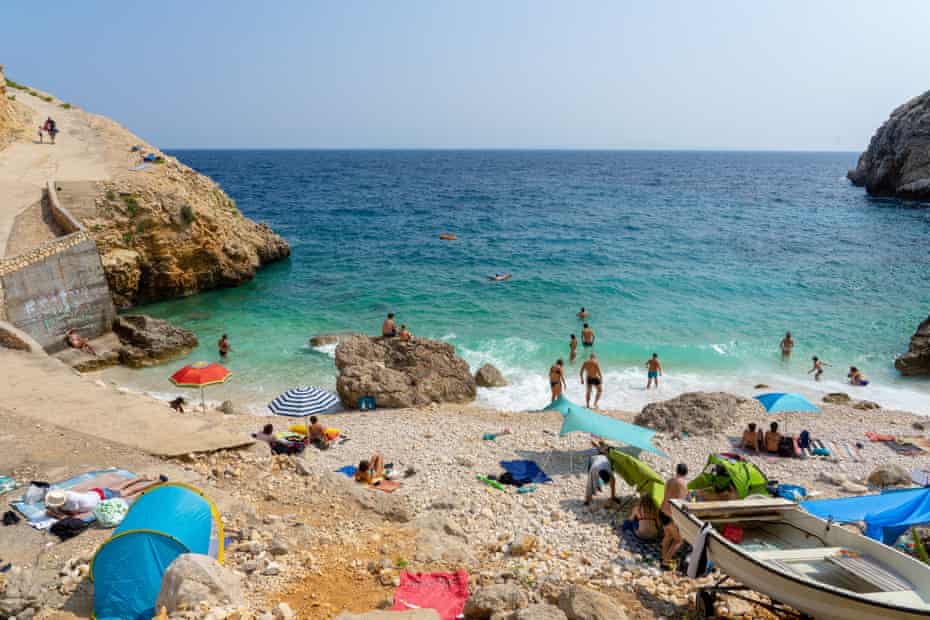
One of the two largest islands in Croatia along with neighbouring Krk, Cres remains untamed despite its proximity to Rijeka and Istria. It’s an island of two halves: the lush green northern half, Tramuntana, soon gives way to the barren karst landscape that covers many Adriatic islands. Although ferries run from Rijeka, Krk and Brestova on the Istrian coast – and the island of Lošinj is connected at the southern tip by a swing bridge – there’s still a sense that Cres is out of the way.
What to do
Set in a deep harbour, Cres town is a pleasing collection of Venetian townhouses squeezed around tiny squares and along narrow alleyways. There’s a long pebbly beach in Cres town, but quieter ones further south in the small villages of Valun and Lubenice. At the island’s southern tip, just before the bridge to Lošinj, is Osor, where public art is scattered around Venetian buildings.
It’s the outdoors that draws many visitors: hiking trails meander through oak forests and along ridges with Adriatic views everywhere you look. Follow the trails to the Beli Visitor Centre, where a wildlife sanctuary devoted to rescuing rare griffon vultures is one of the island’s highlights.
Where to stay
Pansion Tramontana (B&B from €80) in Beli is handy for the Beli Visitor Centre, and the owners also run a dive centre from Beli beach. The ACI Marina (from €67) in Cres town has nine smartly furnished apartments, some with balconies or terraces, and the price includes access to a fitness centre.
Where to eat
Cres produces some of Croatia’s most delicious lamb, and the rustic Konoba Bukaleta in the inland village of Loznati is one of the best places to try it, roasted or grilled. In Osor, Konoba Bonifačić serves platters of grilled fish and lamb stews in a cosy garden.
Pelješac peninsula
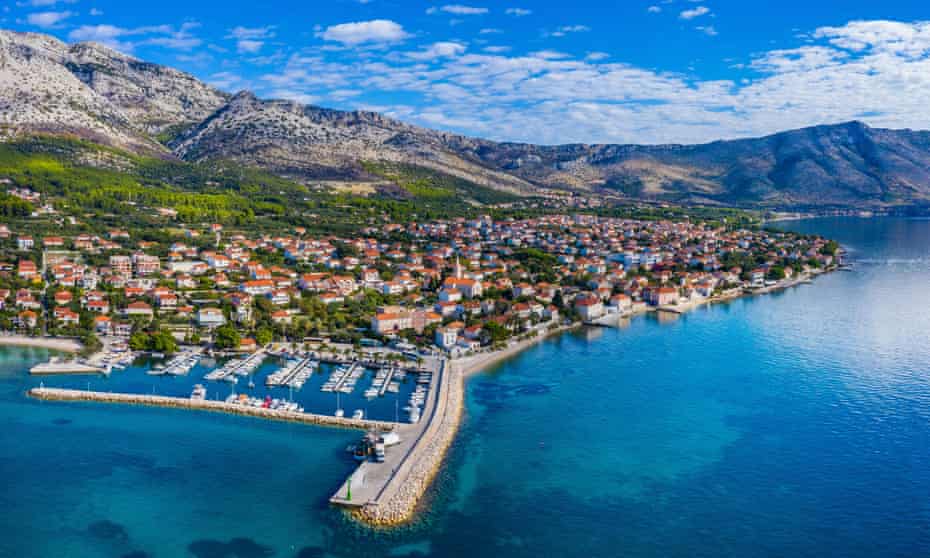
The oyster beds of Mali Ston and the peninsula’s hilly vineyards that produce robust plavac mali, dingač and postup reds have turned Pelješac into a foodie magnet. And Game of Thrones fans come to visit Ston’s 14th-century defensive walls, which masqueraded as King’s Landing in the fantasy drama. This sinuous peninsula that stretches north of Dubrovnik for 90km also has fabulous beaches tucked among its tree-fringed coves and bays.
What to do
Orebić, the largest settlement, is handy for ferries to Korčula, but there’s also a 15th-century Franciscan monastery, the lovely Trstenica beach and the challenging 961-metre summit of Sveti Ilija looming over the town.
The winding main road forming Pelješac’s spine helpfully signposts boutique wineries offering tastings (booked ahead preferably), including Vinarija Bartulović (which also has a cottage to rent), Matuško and Mikulić (which also owns an aparthotel, restaurant and campsite in Orebić).
Despite their popularity, the twin villages of Ston and Mali Ston are hard to ignore, with their neat collection of old stone houses, oyster beds, vast saltpans and those magnificent walls that go on for 3km.
Where to stay
Set on the waterfront in Viganj west of Orebić and built of creamy Dalmatian stone, Heritage Boutique Hotel (doubles from €163) has stylish rooms with exposed beams and brick, as well as a seawater pool facing the sea. Mimbelli (B&B doubles from €68) on Orebić’s seafront is full of charm, a large stone guesthouse with five colourful rooms (three with a sea view) and an attractive restaurant.
Where to eat
Unless you really hate oysters, you can’t pass up the chance to sit on the terrace at Bota Šare in Mali Ston’s harbour and treat yourself to a platter (it also does great pasta). In a hillside above Orebić – with dreamy views of the sea, especially at sunset – is Agroturizam Kapor, a family-run, rustic restaurant that specialises in cooking meat under a peka. Order a day in advance so as not to miss out.
Nin
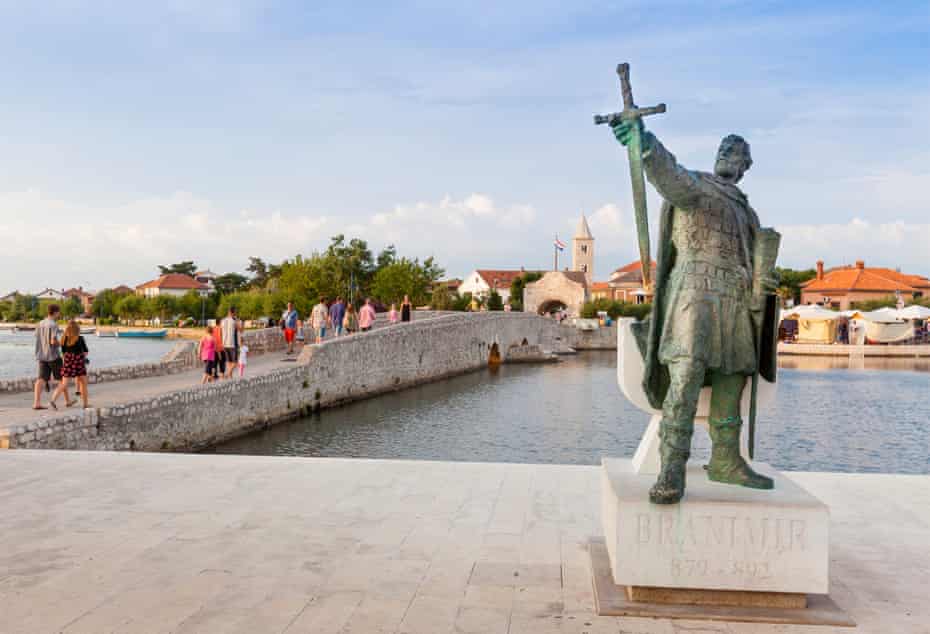
Photograph: Marcos Welsh/Getty Images
Geographically and culturally, Nin packs in a lot for such a small place. In medieval times, this compact town 16km north-west of Zadar was the seat of Croatia’s kings and archbishops, and has a definite fairytale quality about it. Its old town is set on a tiny islet within a bay almost enclosed by a sandy spit, joined to the mainland by two low stone bridges. Saltpans and sandy beaches surround this little oddity, with the Velebit mountains brooding in the background to add more of an air of strangeness.
What to do
Swim and laze – or go kitesurfing – in the shallow waters of Nin’s sandy beaches, including the 1km sandy spit of Žrdrijac. The Queen’s beach is beside a large mud bath, so expect to see people plastered with mineral-rich mud. In the old town, the simple, austere Church of the Holy Cross dates from the ninth century and is believed to be the oldest in the country.
Nin’s long history, including its ancient Greek and Roman periods, is clearly displayed in the nearby Nin Museum of Antiquities. Cross the bridge to reach the Solina Nin Salt Museum, which offers a fascinating look at the town’s 2,000-year-old salt industry.
Where to stay
On the edge of the old town on the seafront, Apartments Val (from €50) offer five breezy studios and one-bedroom apartments with balconies and sea views. There’s also a communal garden with a brick fireplace and a vine-shaded table. A minute’s walk from the water’s edge is Apartments Bella (from €45), with two modern studios and two one-bedroom apartments with terraces, along with a shared barbecue.
Where to eat
There’s a cluster of good places to eat in the old town. Restaurant Providenca has a nicely rustic garden where you can share big plates of grilled meats and seafood pasta. Restaurant Sokol also features homemade pasta and hefty grilled steaks as well as ninski šokol, the cured pork neck that’s a Nin speciality.
Kopački Rit
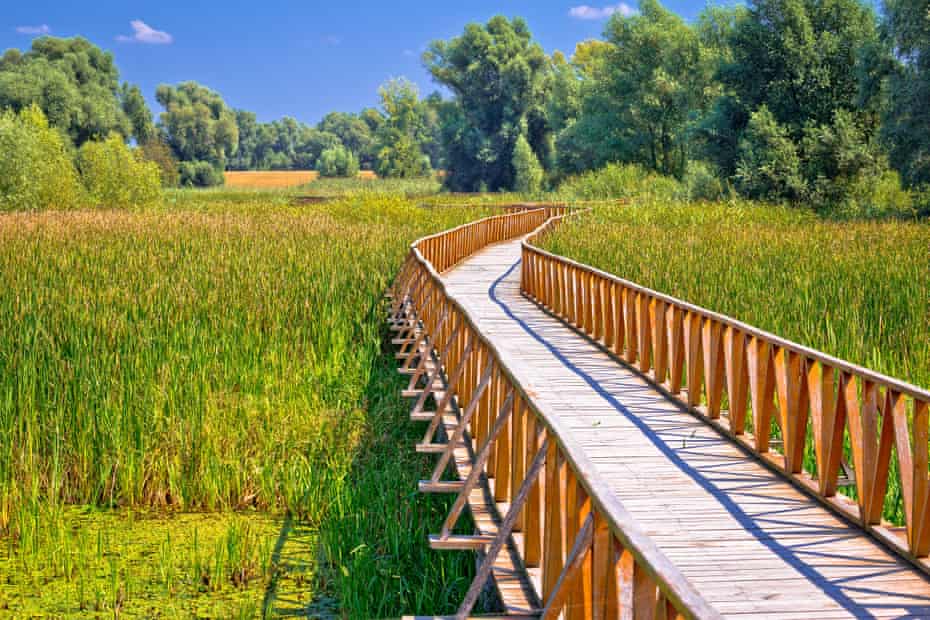
One of Europe’s largest wetlands spreads around north-eastern Croatia between Osijek and the Serbian border. Thanks to the confluence of the Danube and Drava rivers, the vast floodplain of Kopački Rit is hypnotically beautiful. Nearly 300 bird species fly over this huge nature reserve of lakes, ponds, backwaters, flower-rich grasslands and oak forests.
What to do
Follow trails of raised wooden walkways through wildfowl-rich marshes and past a lake that’s a partly sunken forest. Rent a bike in nearby Bilje to cover more ground while looking out for herons, egrets and storks. Autumn is migration time, when even non-birders can’t fail to notice the mass migration of birds. Boat trips from Lake Sakadaš glide through otherwise inaccessible waterways, and you can also join a guided canoe tour. If you’re visiting in summer, bring mosquito repellent.
Kopački Rit is in the Baranja region of Slavonia, whose largest city, Osijek, is full of Habsburg architecture. Check out the cobbled squares and lanes in the baroque quarter, Tvrda.
Where to stay
Within walking distance of Kopački Rit is Didin Konak (B&B doubles from €30 a night), a traditional farm-like complex comprising a B&B, apartments, a restaurant and a wine cellar. In Osijek, the 12-room Boutique Hotel Tvrda (B&B doubles from around €100) is in a prime spot in the Tvrda quarter, and includes a rooftop pool, hot tub and sauna.
Where to eat
The region’s Croatian-Hungarian culinary melange is on full display at Restoran Kormoran, within the nature park. Paprika plays a starring role in freshwater fish dishes, particularly the fiš paprikaš with local carp or perch. It’s a similar story closer to Osijek at Čarda kod Baranjca by the River Drava, with dishes of goulash, grilled chicken and pork, as well as platters of river fish.
Lovran

Like a mini version of the historic town of Opatija, Lovran has kept the Habsburg elegance that made the western coast of Istria the winter playground of the Austro-Hungarians. Grand Italianate hotels and townhouses tower over the Lungomare, the 12km seafront promenade that goes all the way past Opatija to Volosko.
What to do
When you’re not strolling along the Lungomare – one of the most pleasurable things to do – you can nose around the narrow alleys of Lovran’s old town and its tiny 14th-century Church of St George. Beaches here are either on concrete platforms or pebbly stretches, including the one at Medveja on the southern fringe. Lovran is also the starting point for hikes in the pine-covered hills of Učka nature park.
Where to stay
Set on the slopes of Učka, about a 10-minute drive from Lovran’s centre, Hotel Draga di Lovrana (B&B doubles from £131) was built as a Habsburg hunting lodge in 1908 and has utterly breathtaking views of the Kvarner Gulf. There’s an outdoor pool and also one of the seven Croatian restaurants to hold a Michelin star. If you want to be within seconds of the Lungomare, sea-facing Villa Atlanta (from €55) has modern studio apartments and an outdoor pool surrounded by gardens.
Where to eat
In the old town opposite the church, Lovranska Vrata has a lively terrace and serves shellfish platters and homemade seafood pasta. Najade on the seafront by the marina is a bit pricey, but you do get superb views to go with plates of grilled squid, scampi and sea bream.



